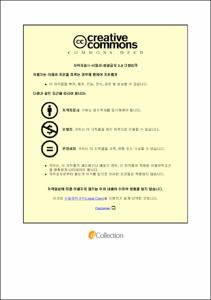Comparative Study of Stem Cell Conditioned Medium and Stromal Vascular Fraction in a Rat Model of Renal Ischemia-Reperfusion Injury
- Abstract
- Background: Conditioned medium (CM) therapy is emerging to avoid various adverse effects of cell-based therapies. Several studies have focused on using stem cell-derived CM in the treatment of various acute kidney injury (AKI) models. However, few studies compare the effects of cell-based and CM therapies in AKI. Therefore, we compared the effects of autologous stromal vascular fraction (SVF) and adipose-derived stem cell (ADSC)-derived CM prepared using the three-dimensional spheroid culture system on the renal function of rats with renal ischemia-reperfusion injury (IRI)-induced AKI.
Materials and Methods: Fifty male Sprague‐Dawley rats were randomly divided into five groups: sham, nephrectomy control, IRI control, SVF, and ADSC-CM. The SVF and ADSC were isolated and cultured using each rat’s paratesticular fat. The ADSC-CM was prepared using the three-dimensional spheroid culture system. Vehicle (IRI control), SVF, and ADSC-CM were injected into renal parenchyme. The renal function of the rats was evaluated 28 days before and 1, 2, 3, 4, 7, and 14 days after the surgical procedure. The rats were sacrificed 14 days after the surgical procedure, and kidney tissues were collected for histological examination.
Results: The renal parenchymal injection of ADSC-CM significantly reduced the serum blood urea nitrogen (BUN) level compared with the IRI control group on days 1, 2, 3, and 4 after IRI. The level of serum BUN was significantly lower in the ADSC-CM group than in the SVF group on days 1 and 4 after IRI. The renal parenchymal injection of ADSC-CM significantly reduced the serum creatinine level compared with the IRI control group on days 1, 2, 3, and 4 after IRI. The serum creatinine level was significantly lower in the ADSC-CM group than in the SVF group 4 days after IRI. The renal parenchymal injection of ADSC-CM significantly increased the level of creatinine clearance (CrCl) compared with the IRI control group one day after IRI. The level of CrCl was significantly higher in the ADSC-CM group than in the SVF group one day after IRI. In addition, collagen content was significantly lower in the SVF and ADSC-CM groups than in the IRI control group in the cortex and medulla. Apoptosis was significantly decreased, and proliferation was significantly increased in the SVF and ADSC-CM groups compared to the IRI control group in the cortex and medulla. The expressions of anti-oxidative makers such as glutathione reductase and glutathione peroxidase were higher in the SVF and ADSC-CM groups than in the IRI control group in the cortex and medulla.
Conclusions: The renal function was effectively rescued through the renal parenchymal injection of ADSC-CM by the enhanced anti-fibrotic, anti-apoptotic and anti-oxidative effects. The ADSC-CM was superior to SVF in terms of serum BUN, creatinine, and CrCl in early phases after renal IRI, but the differences disappeared after seven days from IRI.
- Issued Date
- 2022
- Awarded Date
- 2022-08
- Type
- dissertation
- Alternative Author(s)
- Kim, Yu Seon
- Affiliation
- 울산대학교
- Department
- 일반대학원 의과학과 의과학전공
- Advisor
- 유달산
- Degree
- Master
- Publisher
- 울산대학교 일반대학원 의과학과 의과학전공
- Language
- eng
- Rights
- 울산대학교 논문은 저작권에 의해 보호 받습니다.
- Appears in Collections:
- Medical Science > 1. Theses (Master)
- 파일 목록
-
-
Download
 200000640493.pdf
기타 데이터 / 4.02 MB / Adobe PDF
200000640493.pdf
기타 데이터 / 4.02 MB / Adobe PDF
-
Items in Repository are protected by copyright, with all rights reserved, unless otherwise indicated.